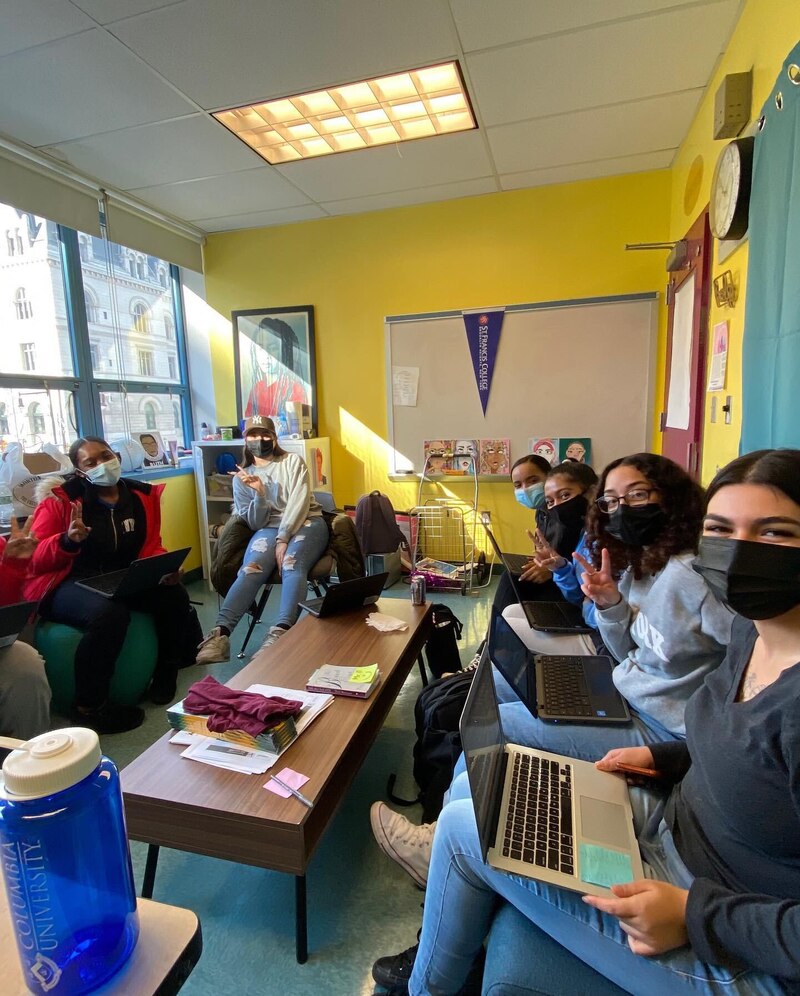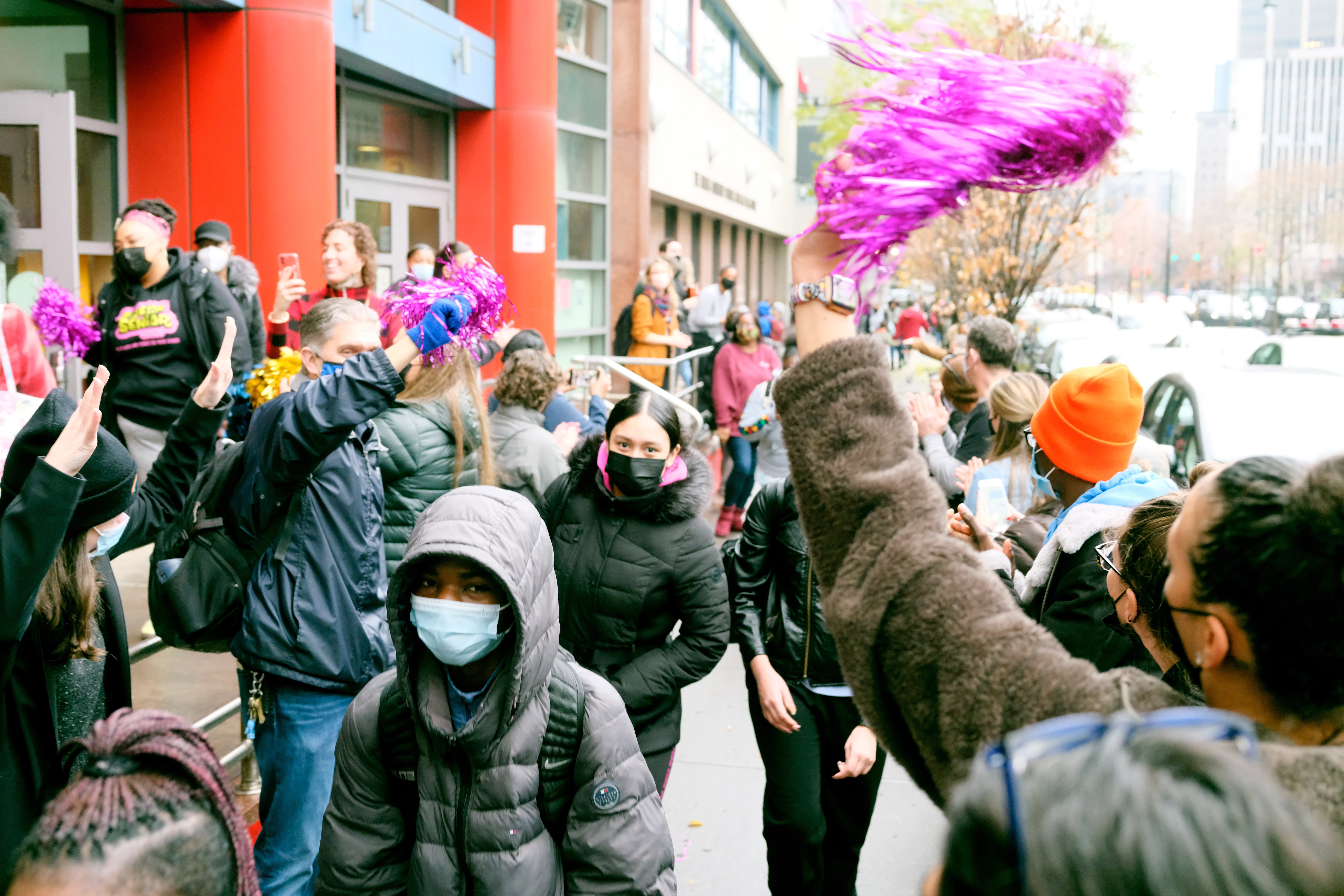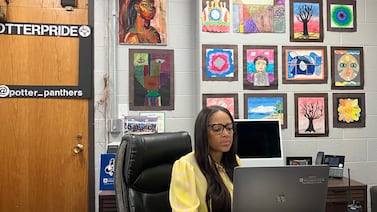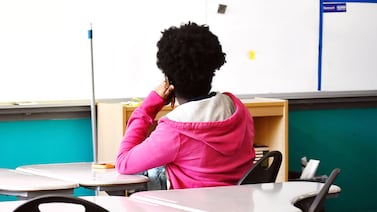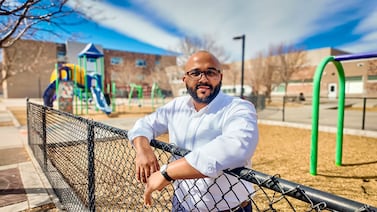Sãmara Cotto was scrolling on Snapchat when a news headline stopped her in her tracks.
Earlier that week, a secretary at her Downtown Brooklyn school spotted a gun and a wad of cash in a student’s backpack while the teen signed in late, before ever making it to class. Scanners popped up at the building in the following days, uncovering 21 banned items such as tasers, pepper spray, and brass knuckles. A headline blared: “School of glock.”
Cotto felt coverage of the incident at the Urban Assembly School for Law and Justice missed a larger point — that students said they felt the need to protect themselves with these items on the way to and from school. The piece made Cotto feel stereotyped as a student of her majority Black and Latino school, she wrote in a response on Snapchat that she typed over an image of the story.
Students and staff at the campus, which houses two other schools — Urban Assembly Institute of Math and Science for Young Women and the Academy for Integrated Learning — are now trying to reframe the narrative of their schools. On Monday, educators rallied outside with pom poms and cheers to help students feel excited about coming to class. Staff at the campus also encouraged Cotto and a group of other students to write their own response.
“I was filled with rage because I realized immediately that because of one student’s choices, we were now all being seen as criminals,” students wrote in the letter they shared with Chalkbeat. “The focus on 21 weapons found through scanning the next day ignored the fact that many of us feel like we need to be able to defend ourselves, not in school, but outside of school.

“Some of the weapons, especially found on young women, were pepper spray and stun guns that are commonly used even by adults for protection,” the letter continued. “The narrative about our school is that we are violent kids that bring guns to school and bring weapons, and the only way to be ‘civilized’ is to have metal detectors. This simply doesn’t happen at majority white schools.”
Surveys of students show that bullying has sometimes been a problem at the campus, but most report feeling safe in hallways and locker rooms. While crimes in schools often get intense media coverage, violence remains rare on campuses across the country.
Emily Payamps, a senior at the Institute of Math and Science and another of the letter’s authors, said she never felt unsafe at school before, and worried the coverage would change its reputation.
“There are going to be people out there who just read the headline, and they don’t care about… the story behind the headline,” she said. “That’s how schools get labeled as ‘bad.’”

Annie Annunziato, an assistant principal at the Institute of Math and Science, said many of the confiscated items were given to students by their parents who worry about them commuting alone. The Institute of Math and Science is a middle and high school for girls, with some students as young as 11. Many travel for an hour or more by transit when it’s dark. Classes start at 8:30 a.m., and after-school activities can run until after 5 p.m.
“I live in the projects by Coney Island. If you’re not going to personally take me home and make sure I’m safe, then don’t take my pepper spray,” one student said in the letter that students drafted.
New York Police Department statistics show that transit crimes are down this year, even compared to last year when the pandemic drove ridership down. Still, Annunziato said students have recently reported more safety issues on transit, including cases of men putting their hands up students’ shirts or forcible kissing.
She encouraged students to write their own responses after she said one had a panic attack at the sight of reporters outside the campus.
“They had to do something because they were losing their minds, upset and angry. So this gives them some power back,” Annunziato said.
In town halls hosted since the gun was discovered, Annunziato said that parents and students have been split on the use of metal detectors. But some students say it hasn’t made them feel any more safe.
Among the items that have been taken from students, and included in the reported tally of weapons: “a plastic edge brush, a wrench brought by a student who wanted to fix his bike, an Afro pick, and scissors that have been on our school supply list since kindergarten,” the students’ letter said.
Cotto got flagged for an additional search one day after the phone she accidentally left in her pocket set off the metal detector. School safety agents she didn’t know rifled through an overnight bag she brought for a planned stay over the weekend at her aunt’s house. It left Cotto feeling embarrassed and 10 minutes late to her first period class, she said.
“I said, ‘You’re doing all of this because of a phone?’” Cotto recalled. “I enjoy being in an environment where I feel like I’m in school, not at an airport. Because there’s a feeling of constantly being watched.”
